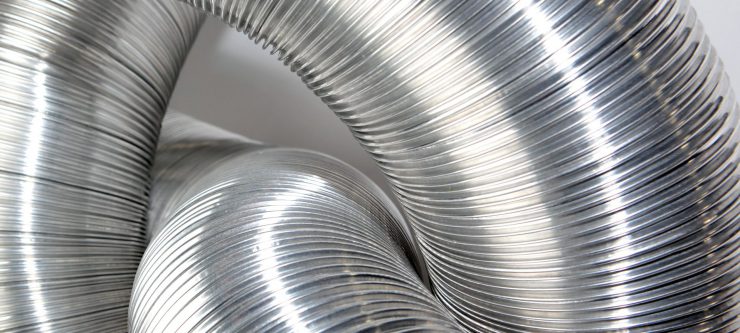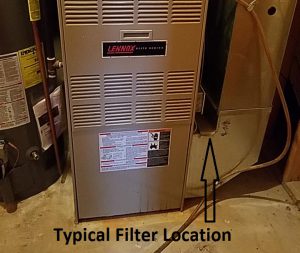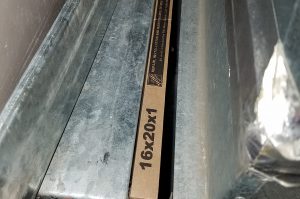(By: Comfort Home Inspections owner Keith Hoaglund)
This post is meant to be helpful for a new homeowner who is learning the ins and outs of their new single-family home. First, welcome to home ownership! There are plenty of things in your home to be aware of and that may require your attention or maintenance. Don’t worry though, I’ll go through some the basics here to help make homeowning a piece of cake.
1.) Furnace Filter
If you take a look at your furnace, you should notice a slot or narrow panel alongside it, usually part of the ductwork, where the furnace filter goes. These come in various sizes but generally will be a dimension like 16x25x1 or something similar.
I recommend purchasing a box of these and labeling them by month (1/2018, 2/2018, 3/2018, etc.), then simply install a new one every month. You’ll always know if you are caught up with the month and year already written on the filter.
2.) Dyer Vent
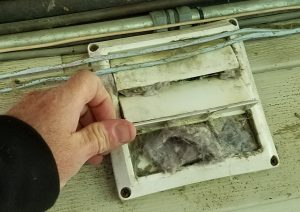 Keep an eye on the laundry vent to clean and remove lint as necessary. If your dryer has flexible ducting, consider upgrading to metal.
Keep an eye on the laundry vent to clean and remove lint as necessary. If your dryer has flexible ducting, consider upgrading to metal.
Where flexible duct is required, always use a metal or aluminum type of duct – never a plastic flex pipe! Plastic can overheat and become a fire hazard.
Check the end of your vent on the exterior of your home. Make sure there is no screen present and that the door swings freely. Vent cleaning kits are available at most home stores and consist of a long, flexible rod or cable with a brush on the end. These will remove a surprising amount of lint from your duct and help the dryer work more efficiently.
3.) Water Softener
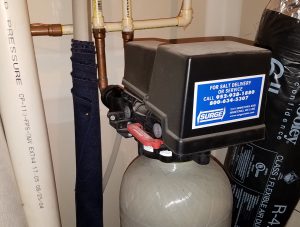 If your house is equipped with a water softener, the main thing to remember is to keep the salt level up. Water softener salt is required for the regeneration cycle which flushes out the system and allows the unit to continue providing soft water.
If your house is equipped with a water softener, the main thing to remember is to keep the salt level up. Water softener salt is required for the regeneration cycle which flushes out the system and allows the unit to continue providing soft water.
There are several service companies that will bring bags of salt to you on a regular basis if you don’t cherish the idea of carrying the 40-pound bags into your mechanical room.
4.) Sump Pump
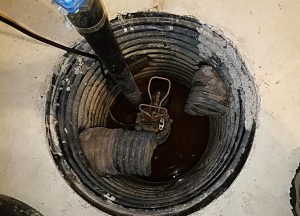 Not all homes have a sump pump, but if yours does, you want it to be in working condition. The worst thing would be to be in need of a sump pump and find it not functional.
Not all homes have a sump pump, but if yours does, you want it to be in working condition. The worst thing would be to be in need of a sump pump and find it not functional.
A sump pump is designed to take ground or surface runoff water that has filtered down around your foundation and remove it out and away from your home.
The “sump” refers to the large container, vessel, or actually sometimes a hole in your basement floor about the size of a trash can. Generally, these have lids installed. The lid is very important as it not only prevents humans or other creatures from falling in, but it also prevents debris from collecting or falling in, which can adversely affect the proper function of the pump.
I once observed a property with a flooded basement where the sump pump was fully functional, but a Barbie doll had fallen into the uncovered sump and had jammed the float preventing the pump from operating.
The “pump” refers to the actual electric motor and integrated pump that sits down in the sump waiting for water to come in. It has a float mechanism that allows for automatic operation. When the water reaches a certain level, the pump kicks on and discharged the water safely outside the home. The easiest way to test the function of this is to add water to the sump until you observe the float raise and the pump turn on and remove the water.
If you happen to be in an area that has a high water table or poor drainage in general, you may hear you sump pump cycle frequently in the spring or during heavy rains. If this is the case, it is crucial to maintain this unit and keep it working in top-notch condition. When in doubt, replace it. Again, you don’t want to be caught needed it when it isn’t working. Any qualified plumber can replace your sump quickly for a few hundred dollars. Far less than the cost of damage repair to a flooded basement.
5.) Fresh Air Intake Duct
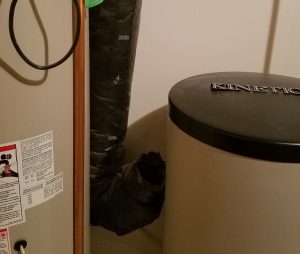 A fresh air intake duct is a simple, round tube that enters the mechanical room and generally hangs down toward the floor. Many times, these six-inch round, insulated ducts will be connected to the return air duct of your heating system, in which case they can be difficult to spot.
A fresh air intake duct is a simple, round tube that enters the mechanical room and generally hangs down toward the floor. Many times, these six-inch round, insulated ducts will be connected to the return air duct of your heating system, in which case they can be difficult to spot.
This duct is designed to draw in fresh air as needed to replace the air that is pumped out of the house by, among other things, the bathroom exhaust fan, exhaust hood above the range, dryer, and furnace.
You may feel cool air coming in during winter and immediately make efforts to close it off. That’s a bad idea. The main thing is to keep these open and unobstructed. Your duct should terminate with a “J” bend or could be directed into a pail to slow the cold air down and keep it from “falling” into your house when not needed.
This will be a multi-part blog series. I will make reference to five more things in your new home next month. Stay tuned!
